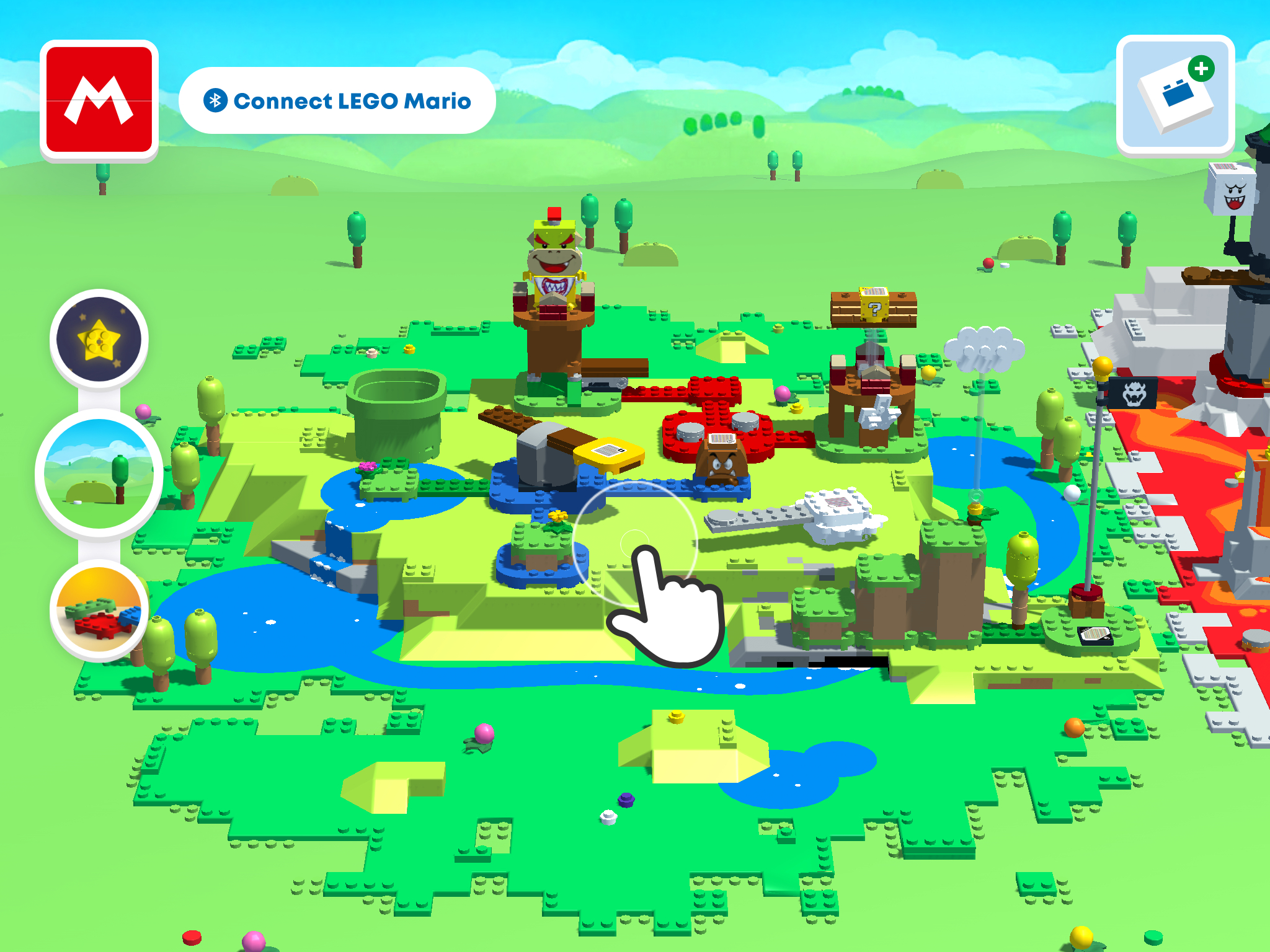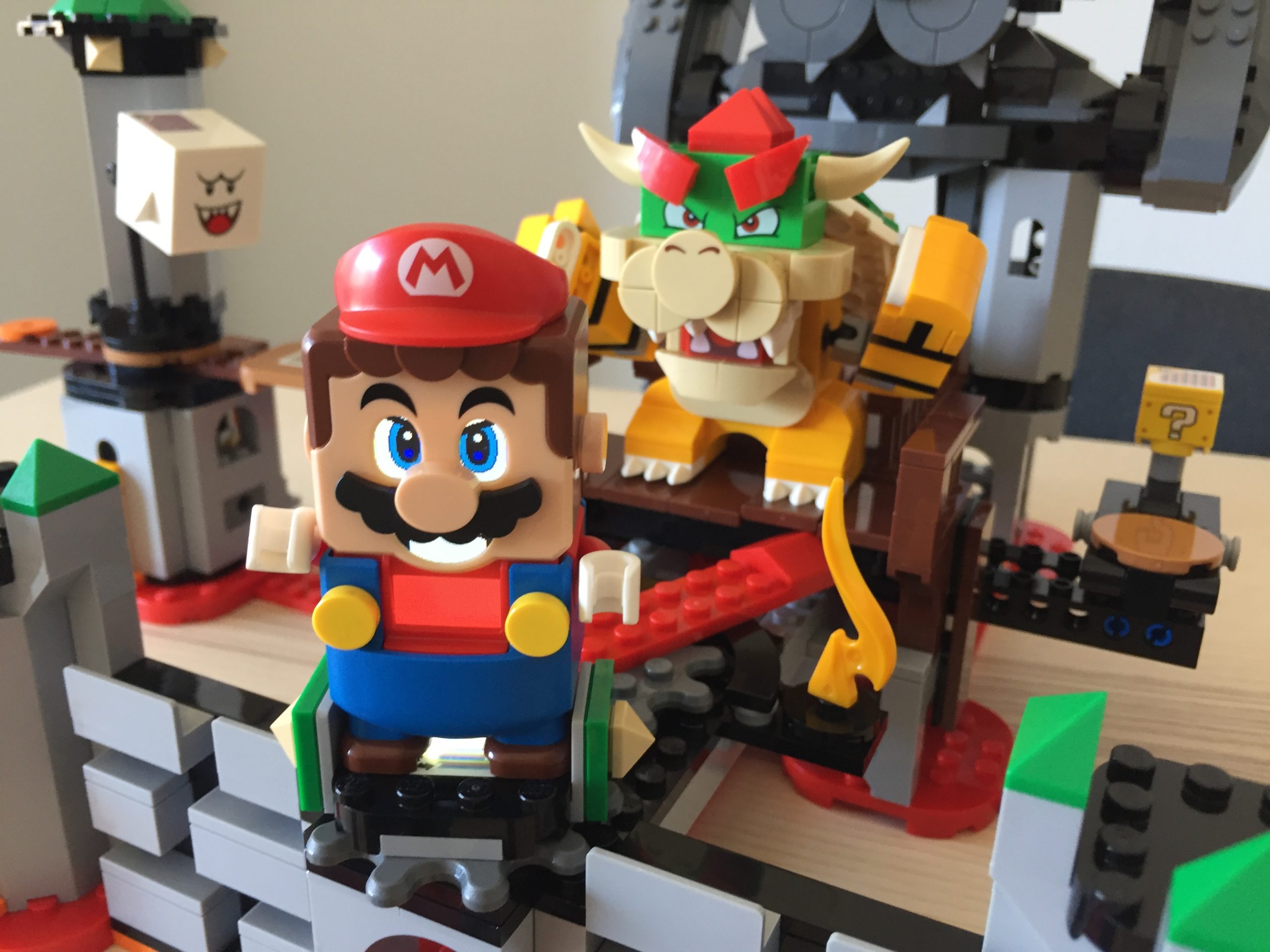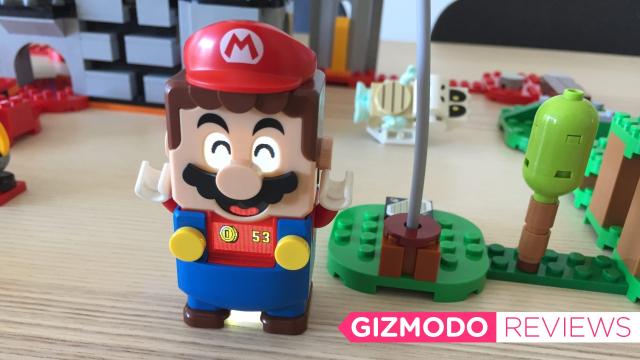After four years of development, LEGO Super Mario is finally here. These aren’t your traditional LEGO sets — they’re more akin to a board game. You’re tasked with building the various obstacles and level pieces of each set, but how you arrange those obstacles and pieces is up to you.

LEGO Super Mario
What is it?
LEGO have partnered with Nintendo to create playable Super Mario sets.
Like
A new, innovative way to play LEGO, well designed sets, faithful to Super Mario franchise, the companion app is easy to use, designed for modular play.
Don't Like
Price tag is a bit steep, no physical instruction booklets, the app kept crashing, needs more structure.
How does LEGO Super Mario work?
LEGO Super Mario gives encourages you to build your very own Mario course. If I could draw a comparison between my experience playing with it and any Mario game, it’d be Mario Maker.
The gameplay style of LEGO Super Mario is modular and open-ended. You walk Mario through the course, interacting with the various obstacles you’ve laid out. The only parts that you need to include in each course is the starting warp pipe, as that triggers the stage timer, and the goal flag, which ends the level. Both of these are only available with the Starter Course.
Otherwise, there’s no limitation to what you can or cannot do both on your own with with shared play with mates. You can play it straight and rig it to instantly jump onto the goal tile, or collect a tonne of coins easily. Or you can go wild.
I had my doubts about the blocky design of the LEGO Mario figure, but actually holding it in my hands really brought me aroun . It has a built in speaker that plays sound-effects and music from the games, giving the experience a strong sense of authenticity and nostalgia. When Mario jumps or collects a coin, it sounds exactly like it should.
A sensor in the base of Mario causes him to react to the surfaces he’s placed on. Put him on a green tile, and his chest display will light up with an image of grass. Blue will display water, yellow will show sand and red will display fire. If you already own a few green, red, blue or yellow LEGO plates, they’ll definitely come in handy when it comes to experimenting with course designs. This scanner isn’t just limited to LEGO bricks — placing Mario on any red surface will cause him to react as though you’ve placed him on a lava tile.

Mario’s eyes and mouth are LCD screens that can display a range of emotions. His eyes also seem to follow you around the room. The Mario figure also comes with an in-built accelerometer and gyroscope that can determine when Mario is moving or spinning.
The set up
First you need to set the sets up. It took me about 40 minutes to put together the Starter Course, and about three hours to do Bowser’s Castle — more on that later.
Playing the game
The various action tiles, power-up blocks, and enemies have their own, unique colourful barcode-like-patterns. Depending on the obstacle, which is activated by placing Mario on an action tile, Mario’s internal devices react to the challenge at hand and reward you appropriately.
For example, putting Mario on the spinning platform in the Starter Course will put him in a state where you get more coins for each rotation you complete. And if Mario falls off the platform, he will become momentarily dazed. Knocking Mario off a platform without first placing him on an action tile won’t do anything.
The Starter Course’s obstacles are simple, but fun. It draws a lot of inspiration from the original Super Mario Bros.’ World 1-1. You need to keep Mario balanced on a spinning platform to cross some water (or lava, if you’re feeling dangerous) and there’s a tower you need to topple so you can deal damage to Baby Bowser. Or, keeping within the spirit of these sets, you can do none of these things and make your own challenges.
The Bowser’s Castle set throws a few different enemies and obstacles at you. There’s a flipper you can use to launch a Lava Bubble, a balancing beam you can knock a Dry Bones off — a spinning platform where you can collect coins while being pursued by a Boo.
You need to trigger two platforms to make the Bowser statue’s arm flip up, which will force Bowser to slide on a platform. It’s then up to you to furiously spin Mario around on a to make Bowser fall over so you can jump on the action tile that’s on his shell.

You really need to be rough with these sets, which felt at odds with how I’ve always treated my other LEGO. With the Bowser’s Castle set, I really had to pound the platforms to make the Bowser statue raise its arms. I knocked over one of the castle’s towers and instantly had a flashback to the time I demolished my LEGO X-Wing when I knocked it off a shelf.
It’s different way of playing with LEGO, at least compared to the way I played with them as a kid, but overall it was a fun experience.
As LEGO sets they both look great. I had a spare shelf in my office free and Bowser’s Castle looks pretty good occupying that space. I’m particularly fond of how the different enemy figures look — especially the Bowser.
It’s app assisted
The companion app is essential to LEGO Super Mario. The sets don’t come with the traditional LEGO instruction booklet — only a short pamphlet that tells you the instructions are only available in the app.
The app itself is just under 1GB in size, so you might want to download it before you get your first set, so you can dive right into the building process.
You’ll need to sync the Mario figure with your phone or tablet via Bluetooth, which will let you record your scores for each level. You can still run the course if Mario isn’t synced — you just won’t be able to record these scores.

The Starter Course gives you instructions for the separate pieces, but no suggestion on how to arrange the individual parts. So from the very beginning you’re encouraged to experiment and make your own unique level.
The instructions will also give you an interactive 3D model at each stage, so you can make sure you’re putting every piece in the right place. After completing each obstacle, there’s also a small video you can watch to see how it works.
The app’s interface is simple to navigate, clearly designed with young children in mind. There’s a section where you can catalogue your various courses and scores. This includes a community tab that features suggested course builds and custom courses made by other users. There’s also weekly challenges and a section that collects the instructions for each set, sorting the ones you have into a fun overworld map that’s reminiscent of the video games.
Unfortunately the app kept crashing
Having no physical instruction booklet for a LEGO set doesn’t feel right to me. I’ll admit this seems like a small gripe, but it became more significant when the app kept crashing while I was trying to build the Bowser’s Castle set.
I stopped keeping count of the total crashes once I hit double-digits.
To tried to fix the issue, including uninstalling and reinstalling the app on multiple devices, but with no luck. In the end, I had to resort to a Youtube video where someone had screen-captured the instructions.
I also found the app to drain my battery life something fierce.
I’ve seen a very small handful of others complain about encountering the same problem, so I think I’m in the minority here in terms of user experience. But I do know it resulted in me almost rage quitting building LEGO — something I didn’t think possible.

But Is It Fun?
Overall, my time spent with LEGO Super Mario was fun. I enjoyed playing with the courses I built and I find the general experience of building LEGO sets to be weirdly calming, Although the app’s constant crashes really tested my patience.
LEGO has done a really solid job of capturing the feel of the Super Mario series in this analogue format. It feels equal parts LEGO and Nintendo.
That said, after having spent just over an hour experimenting with the two sets, I felt as though I had gotten more than enough playtime from them. The novelty of the game wore off fairly quickly.
I think LEGO Super Mario has a greater appeal for kids than it does for adults. Judging by all of the marketing materials for the LEGO Super Mario sets, that young demographic seems to be the target audience.
Flipping through the community posts, the majority of the sets that I saw uploaded there were clearly made by children. This doesn’t feel like a surprising revelation to me, as the play style of LEGO Super Mario is meant to invoke the free-wheeling, do-whatever-you-want imaginations of kids.
The lack of structure is both a blessing and a curse. You set yourself the challenge, but the challenge is never harder than you. Mario is given 60 seconds to defeat a stage, and I had no problem completing the various courses I set up with plenty of time to spare.
Having unlimited movement means you can do anything you want, untethered from the gameplay rules of the video games. I would’ve liked a little more structure with the actual game play instead of it being so open-ended, as the restrictions of the original games are what create the challenge.

Pay To Play
I think my biggest issue with the Starter Course is you definitely need more LEGO Super Mario sets to get the most out of the game. The Starter set feels a bit light, especially with the $89.99 price tag. The builds aren’t complex and it’s all a bit small.
You’re predominately paying for the Mario figure, which is essential to be able to use any of these sets. After playing around with just the Starter Course set it started to feel a bit too repetitive. I tried to mix it up as much as possible, but there’s only so many combinations before you’re just making slight variations of previously made courses. Combining it with the Bowser’s Castle set felt like something I absolutely needed to do.
The big question you need to ask yourself before committing to this is how much you’re willing to spend to get that full experience? The Bowser’s Castle set retails for $159.99, which seems a bit steep to me. Especially when you can pick up three smaller sets together for roughly the same price, giving yourself way more game play mechanics to experiment with.
If you’re someone who wants to pick it up purely for the build experience and to have it on display, it might be hard to validate the culmination of those price tags.
[related_content first=”1223539″]
